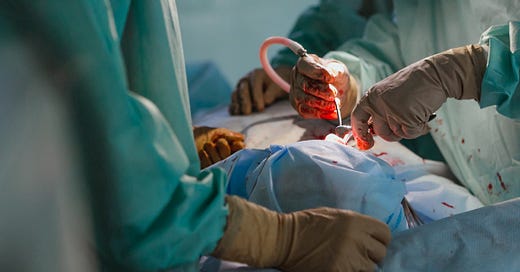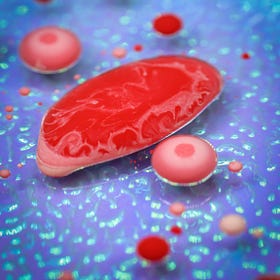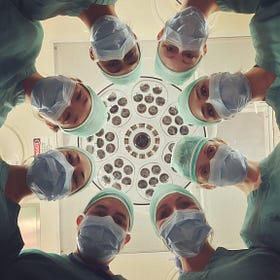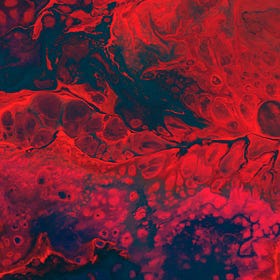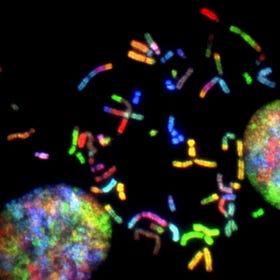The Uncomfortable Truth Behind Healthcare Strategies Targeting Heart Disease
We’re quite clear what these surgeries can do… But what do they NOT do? That’s a whole new ball game altogether.
According to the World Health Organization, heart disease is the number one killer of humans worldwide.
And as such, there have been many different things that the healthcare industry has developed with in an attempt to counteract that issue, such as:
The use of statins, where more than 35 million Americans are known to take it daily;
The insertion of a stent, which is a tiny tube that goes into an artery to prop it open;
The use of a heart bypass involves the use of existing arteries to redirect the flow of blood so that it bypasses the blocked artery.
But of course, the problem with doing all of that is that there isn’t any guarantee that the stent or the bypass or the statin will protect one from developing a heart attack.
As it was mentioned in this Reuters article,
At least two prior studies determined that artery-clearing and stenting or bypass surgery in addition to medical treatment does not significantly lower the risk of heart attacks or death compared with non-invasive medical approaches alone.
So we are faced with this issue where we may need to go for expensive corrective surgeries for a heart disease issue, but we may only find out later on that they aren’t the “royal elixirs” that help to reverse heart disease - because they’re not going to do anything about preventing the buildup of new plaque or eliminate existing plaques from arteries.
The role of live biological cells in heart disease
The first issue that we have to be clear about in heart disease involves the activity of live cells within our body. An atherosclerotic plaque accumulation does not come about as the result of many different inanimate objects aggregating together.
They hang out together as live cells, which poses a problem.
They have minds of their own.
Ever tried controlling a toddler? Some parents throw their hands up in despair when it comes to getting their kids to behave.
Because these kids, being human, have minds of their own.
The cells in our body, being live cells, are also going to function based on the prevailing biochemical signals that they’re issued with. They’d have less than a mind of their own compared to babies, but having to deal with something alive is always more difficult than dealing with an inanimate object. It’s one reason why kidnappers attempt to drug or physically knock out their target captives, no? Inanimate things are so much easier to control.
And these cells will end up aggregating, while other cells will create a collagen/fibrin cap to imprison them within a plaque.
The Importance Of The Macrophage In The Immune System
The macrophage is one of those immune cells in our body that does quite a fair bit of things without us thinking about it. We’re exposed to so many microbes and virues in the environment on a daily basis, and some of them can penetrate through the skin and mucosal barriers that act as the first line of defence to those foreign invaders:
The sealed-off cells can secrete enzymes to eat their way out of their jailhouse, which is the same type of enzyme that eats away at the collagen in our joints to force an osteoarthritis problem:
Our Blood Cholesterol Levels Indirectly Affect Our Joint Structures. Here’s How.
Heart disease, as we know it, is and has been responsible for the deaths of many people on this planet. The data presented by the World Health Organisation indicate that: The world’s biggest killer is ischaemic heart disease, responsible for 16% of the world’s total deaths. Since 2000, the largest increase in deaths has been for this disease, rising by m…
The environment within the blood also strongly promotes clotting; hence any cells (and other material) that can escape the plaque will form a clot almost instantaneously:
The Role That A Clot Plays In A Heart Attack
Our blood is a very unique fluid. It doesn’t just contain water. It contains a whole load of other dissolved substances such as proteins, electrolytes and vitamins, as well as other insoluble components such as the red blood cells. As such, our blood can do a lot of things that other fluids can’t really do — and that is chiefly because of what else is in…
The other issue is that this sort of pro-inflammatory environment does not promote the growth or activity of cells involved in reducing plaque sizes.
Because we do have cells in our body that can aid in the elimination of the foam cells that are entrapped within those plaques, that process is known as efferocytosis:
Efferocytosis And Its Oft-Unstated Role In Artery Clogging.
The word “efferocytosis” isn’t one that is frequently thrown about these days. Most heart disease patients would not have heard of this word before, because rarely is it (if ever) discussed by their doctors. Oddly, though, it is a biological process that occurs naturally within our bodies. Much like autophagy, which more people would have heard of:
However, efferocytosis is reduced in a pro-inflammatory environment, and hence one with a sizeable atherosclerotic plaque cannot necessarily count on reducing their plaque sizes “naturally” or “from within.”
When the conditions are right for plaque growth
We’d see live cells congregating and accumulating into masses of plaques.
We’d see live cells being imprisoned in the plaques and attempting to bash their way out of those prisons.
Whether we’ve got a stent to keep the arteries open or a bypass to allow blood to continue flowing, we aren’t really dealing with the aberrant activities of those wayward live cells!
And that becomes a problem with the immune system already.
Do feel free to check out 10 Nutrients That Support A Healthy Heart to see how a diet can be modified to include more nutrients that support heart function!
Also, do feel free to share this article and hit the “subscribe” button to get more updates about the science concepts in nutrition and health, all deconstructed nicely for your convenient perusal!

